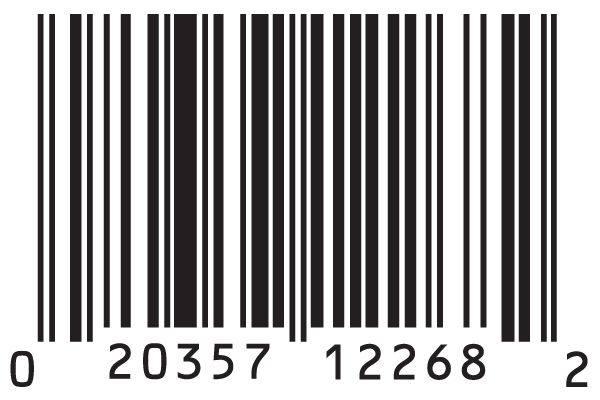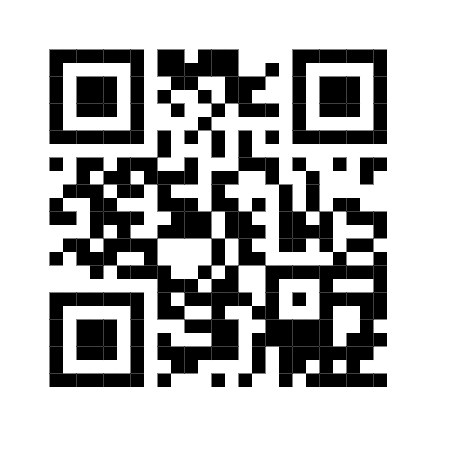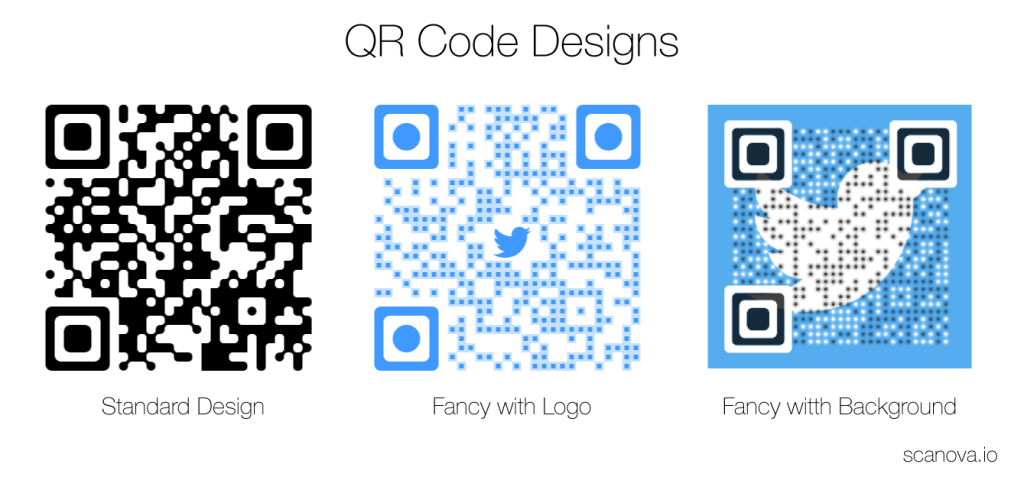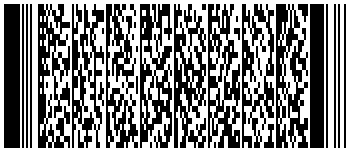We all know what barcodes (or 1D barcodes) are and see them everyday on products. Cashiers in retail stores scan these codes with optical readers to bill the items that we want to purchase. Each barcode (typically the UPC-A) contains a 12-digit numerical code that helps the billing software identify the product.
But this was obviously not enough. Retailers and manufacturers wanted more information in a smaller space. Enter 2D Barcodes.
What is a 2DBarcode?
A 2D Bar code is a two-dimensional way to represent information. It is similar to a linear 1D barcode, but can represent more data per unit area. Typically, it can store upto 350 times the information a 1D barcode can store.
What are the types of 2DBarcodes?
There are quite a few widely-accepted standards of 2DBarcodes:
QR Code
This is the most popular standard of 2D codes and is widely used in inventory management, marketing & advertising, education, and tourism.
A QR Code can contain information such as alphanumeric text, web URLs, contact information, Wifi network name and password, calendar event information, and maps location. A QR Code can store upto 4,296 alphanumeric characters.
Another interesting advantage of a QR Code is that it doesn’t have to be black-and-white and can easily be designed.
QR Codes can be created and designed online using QR Code Generator. Both handheld optical readers and smartphone-based QR Code readers can scan a QR Code.
Aztec Code
An Aztec Code is primarily used in the transport industry by companies such as Eurostar and Deutsche Bahn on online tickets and printed by customers. Unlike barcodes, an Aztec Code can store alphanumeric information.
Data Matrix
A Data Matrix is another 2D Barcodes that can store text or numeric data – a total of upto 1556 bytes. Its most common use case is to mark small items such as small electronic components, and food and beverage items.
Maxi Code
A Maxi Code is a 2D (two-dimensional) barcode that was originally developed for tracking and shipping packages. It’s similar to a 1D barcode but it uses dots instead of bars. It’s also called a Bird’s Eye Code or a UPS Code. MaxiCode includes error correction, which enables the symbol to be decoded when it is slightly damaged.

PDF417
The PDF417 format of a 2D code is primarily used in the transport industry. One can find these codes on boarding passes of flights. The barcode has patterns each of with contain 4 bars and is 17 units long.
How to make the most of the QR Codes
Here is how you can leverage QR Codes:
1. Direct traffic to your website
Say you own a website and want to increase your website traffic. It could be for any use case such as getting the end-users to:
- Watch a video
- Check out your product range
- Read about your business
- Visit your website
- Make a purchase
A Website URL QR Code helps do away with the need of adding the web link to your promotional campaigns. All that you need to do is—create the QR Code and add it to your campaigns.
End-users will simply have to scan it to land on the encoded webpage. No need for them to manually open the browser to type the link to land on your desired content.
2. Gain social media followers
Social media presence has become vital for both marketing freelancers and businesses. But you can’t simply mention your social media handles and expect people to follow you. It needs them to put effort. Hence, many of them simply won’t bother.
Hence, you can use a Social Media QR Code. End-users can scan it to view all your social media handles such as Facebook, LinkedIn, and Twitter, on a single page. They can then decide on which platform to follow you online.
3. Share contact information
You know how important networking is especially for working professionals. And to do it, you hand out your business cards when you meet new people. And you hope that they’d connect with you.
But that’s not enough. Recipients have to pull out their phones, open the contacts app, and type all your details to save you as a contact. This needs effort. Hence, most business cards, by no fault of their own, end up in the trash.
But you can change that. How? Just put a VCard QR Code on your visiting cards. When scanned, recipients can see your contact details on their phones with a button—Save as Contact. That’s it. No need for the end-users to type anything. That’s how simple it is.
4. Provide event information
Say you are organizing an event and want to inform your audience about it in a tech-savvy way. This is where an Event QR Code can help you.
When scanned, your audience can see your event’s complete information including the exact venue location, timing description, and images. They also get the option to RSVP.
5. Share documents
It is common to share documents among friends, colleagues, and businesses. They can be reports, PowerPoint presentations, assignments, or product specifications. And a Document QR Code has got you covered. Your audience just needs to scan it to access the encoded document in no time.
6. Boost app downloads
Do you have a mobile app for your use case? Then you’d want people to download it.
But it is quite difficult to get them to download your mobile app. But an App Store QR Code can help you here. When scanned, the QR Code redirects the end-users to your app on the app store based on their mobile’s OS. They can then download the app and start using it.
7. Offer discounts and coupons
Coupons and discounts have always been a good way to boost business. And why not? They help attract customers and ultimately lead them to make a purchase. But here’s the thing—none likes remembering random characters of a coupon code.
Hence, a Coupon QR Code can make the promotional campaigns better for you. When scanned, customers can redeem the encoded coupon to avail its benefit.
How to create a 2Dbarcode?
Depending on your use case, you can create QR Codes in three possible ways:
1. Create QR Codes one by one
This option is best when you don’t need hundreds and thousands of QR Codes. In fact, here you can create up to 31 different types of QR Codes.
To create one, you simply need a QR Code generator. A simple Google search will fetch you many options to choose from. For your convenience, here is a detailed comparison of the best QR Code generator available online. You can go through it to find the best one for yourself.
Once finalized, you can begin your QR Code journey. Having said that, here’s a step-by-step guide on how to do it.
2. Create QR Codes in bulk
If you need a large number of QR Codes (in hundreds or thousands), you can use a bulk generation service. It helps you generate static QR Codes in bulk. The QR Code category can vary depending upon your use cases such as Website URL QR Code, Simple Text QR Code, Serial Code QR Code, and VCard QR Code.
That means no need to create QR Codes individually. Just upload a data file with all the details to be encoded and download your QR Codes in a zip folder.
In case you are interested, here is a detailed guide on how to generate QR Codes in bulk .
3. Create QR Codes programmatically
This feature is especially useful if you want to integrate QR Code generation into your own information system.
In such cases, QR Code API allows you to generate QR Codes programmatically in real-time via your own information system or mobile application. Here, you won’t need any additional software or tools to create the QR Codes manually.
Best Practices
Here are some of the best practices that you must know regarding QR Codes:
1. Add an appropriate CTA
CTA translates to ‘Call-to-action’. It is a small instruction that tells the users what action they need to do. And this text nudges them to take the required action.
It could be anything such as ‘Scan here to visit our website’ or ‘Scan here to download our app’.
2. Add a design to the QR Code
If you are planning on using QR Codes for promotions, you should add design to them. That’s because custom QR Codes attract 50%-200% more scans than plain black-and-white ones.
3. Test scan the QR Code
It is always advisable to test scan the QR Code before putting them out for your target audience. You can do it via the phone’s native camera or third-party scanning apps.
4. Choose optimal printing format
It’s recommended to export QR Codes in high-resolution formats such as SVG, EPS, and PDF. They are extremely useful when used for print media creatives. They ensure that the QR Code doesn’t get pixelated even after you zoom in or zoom out.
That’s it. That is all you need to know about a 2D Bar code. You can create your own custom QR Code as per your wish. And track its scanning activity to gain new insights about your audience.
Still, have questions? Ask in the comments section below.






